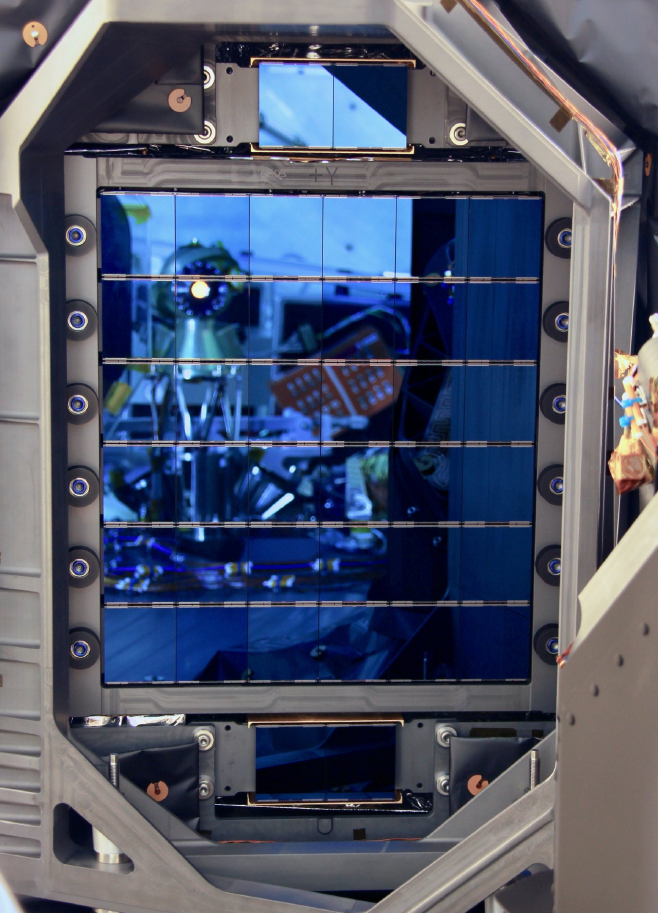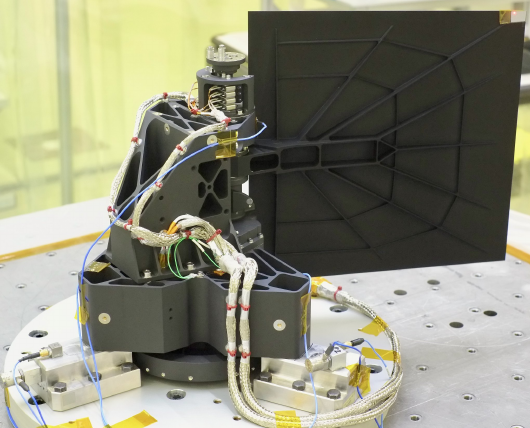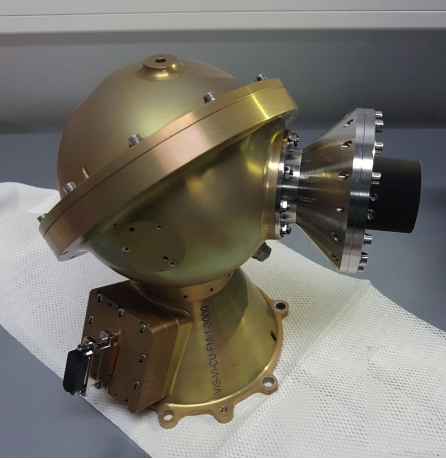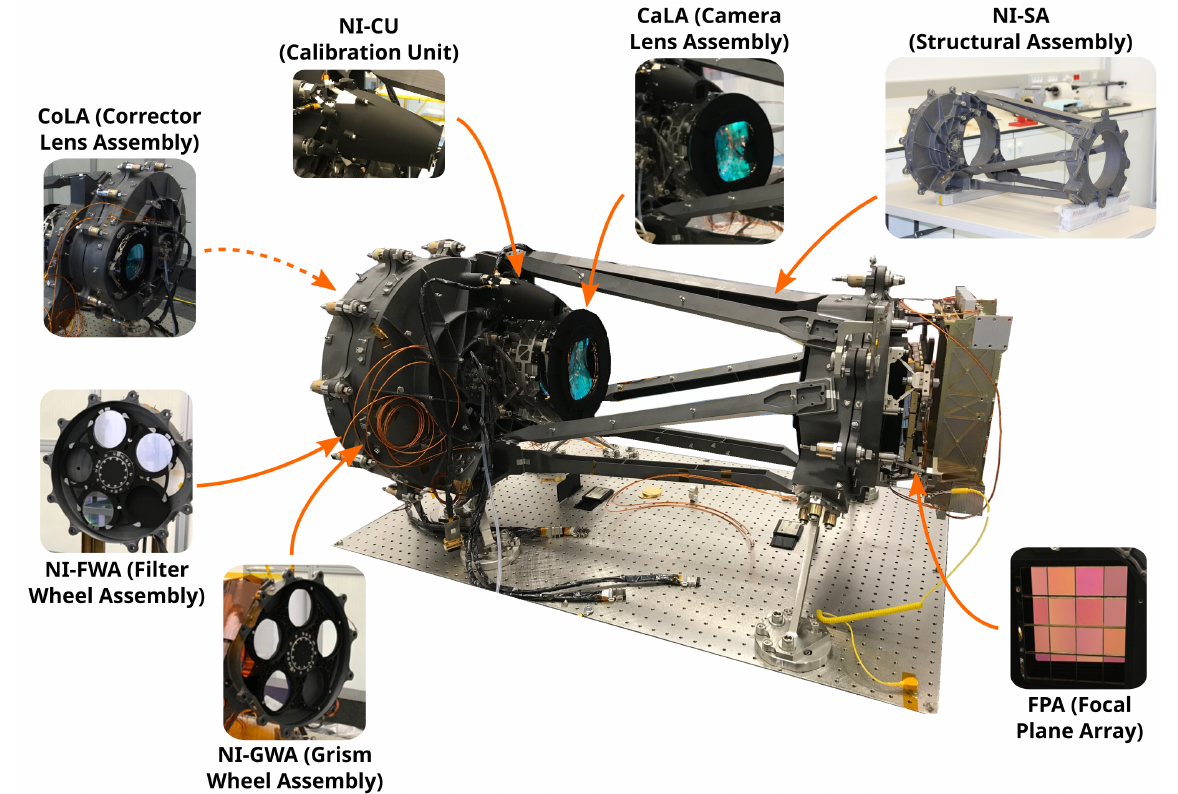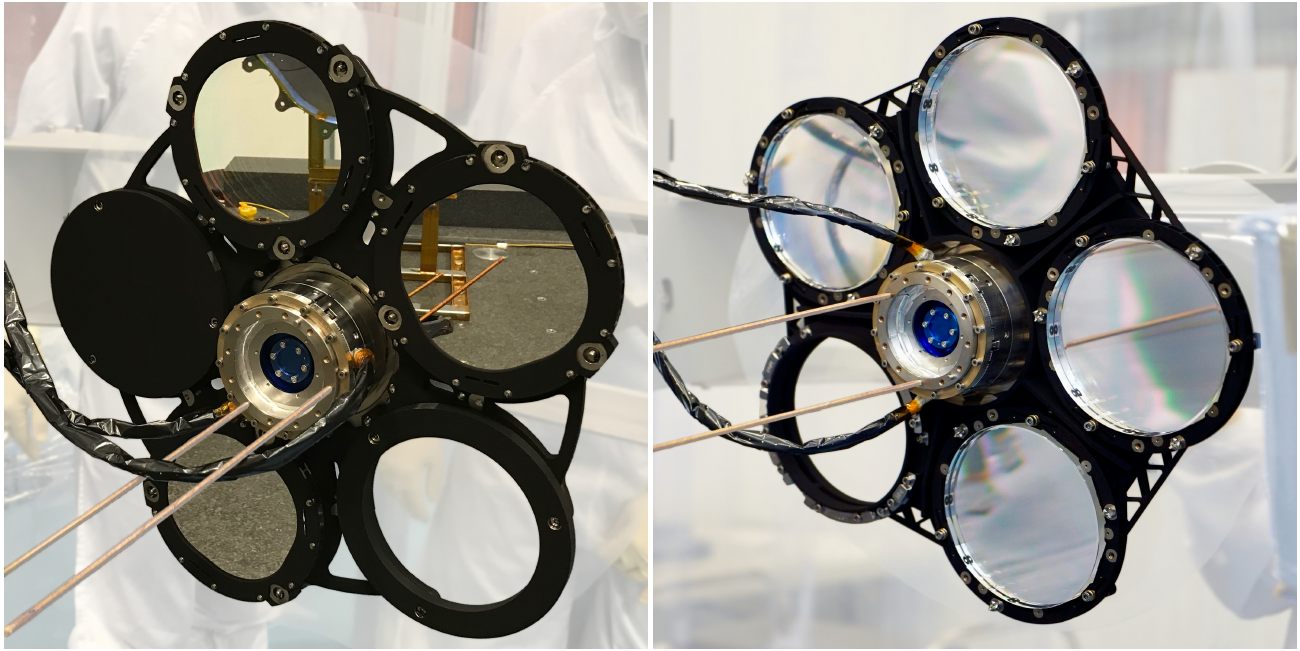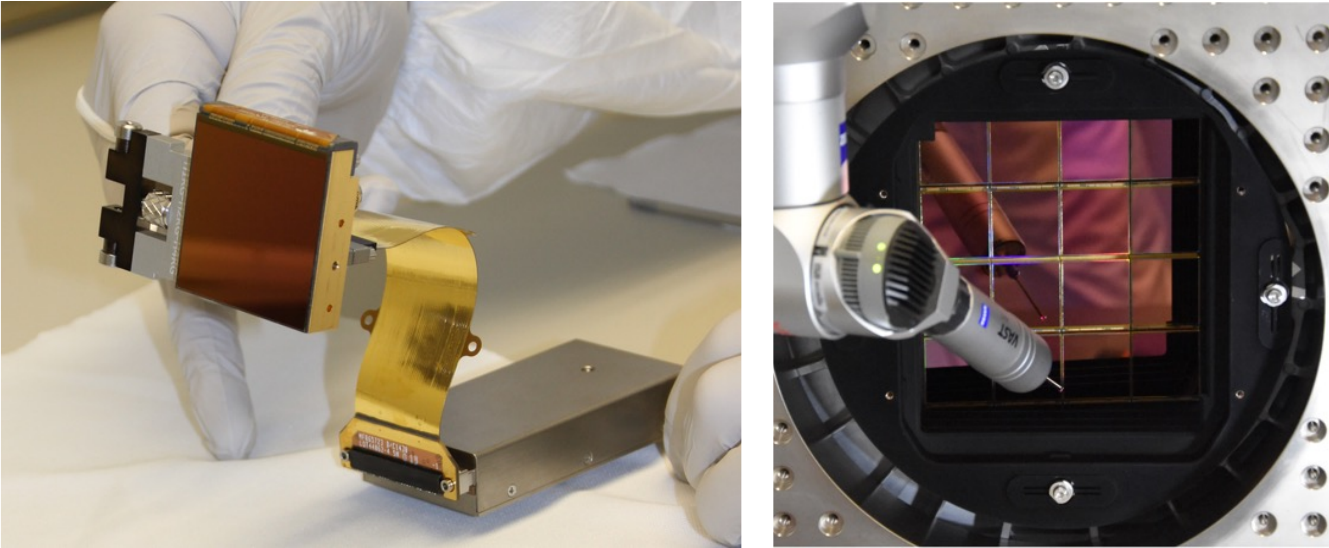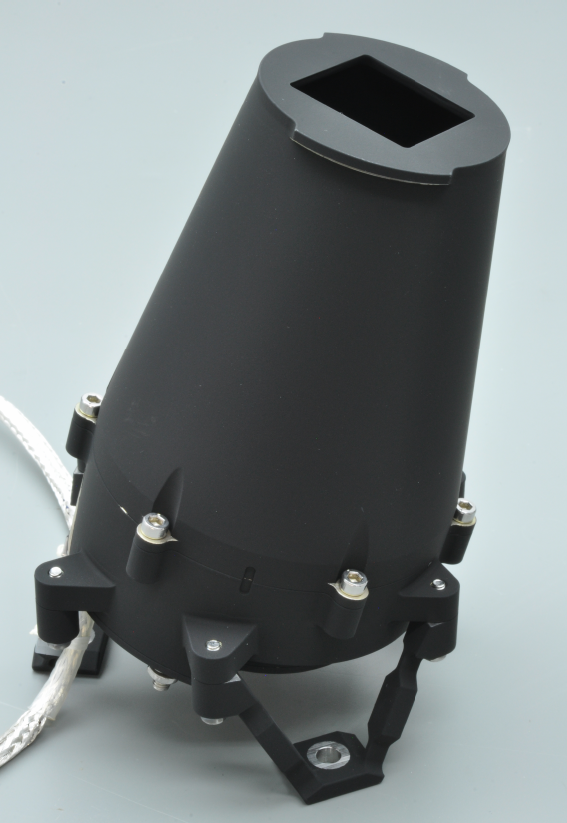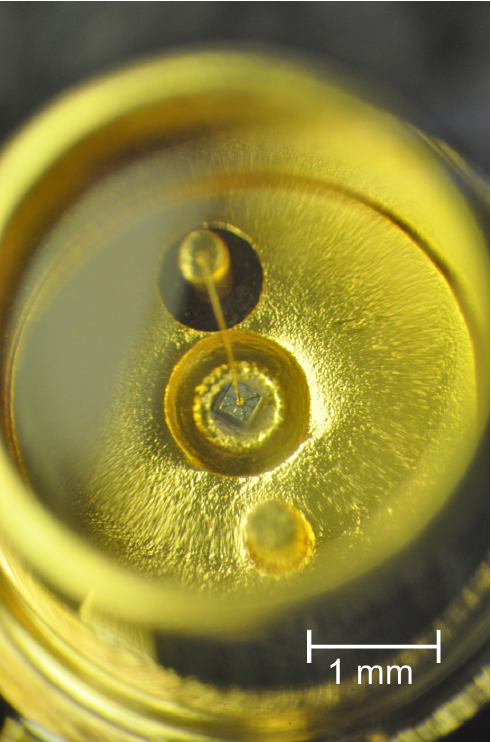In our mini-series about the Euclid Consortium’s set of new reference papers we are now turning to instrument descriptions: Paper 2 (Euclid. II. The VIS Instrument, Euclid Collaboration: Cropper et al. 2024) describe the VIS instrument, papers 3 and 4 (Euclid. III. The NISP Instrument, Euclid Collaboration: Jahnke et al.; Euclid. IV. The NISP Calibration Unit, Euclid Collaboration: Hormuth et al.) the NISP instrument.
Find parts 1 and 3 of this paper series here: the Euclid Mission Overview and the Flagship Simulations
The instruments onboard Euclid are two wide-field cameras, VIS in the visible light for extremely well controlled shape measurements of galaxies, and NISP in the infrared light regime, for images and slitless spectroscopy. Together they are are at the core of Euclid’s survey of the sky, observing a common half a of a square degree at a time, for a total of six years. But how do these instruments look like? How were they built? What are the underlying specification and now their capabilities in space? To answer these questions and to provide a reference for all astronomers and other interestees, the EC wrote these three papers.
Euclid. II. The VIS Instrument (Euclid Collaboration: Cropper et al. 2024) obviously describes VIS. Its 36 CCD detectors have a total of 609 million pixels, one of the largest focal planes ever to be used for astronomy, both compared to other ground- and space-based instruments.
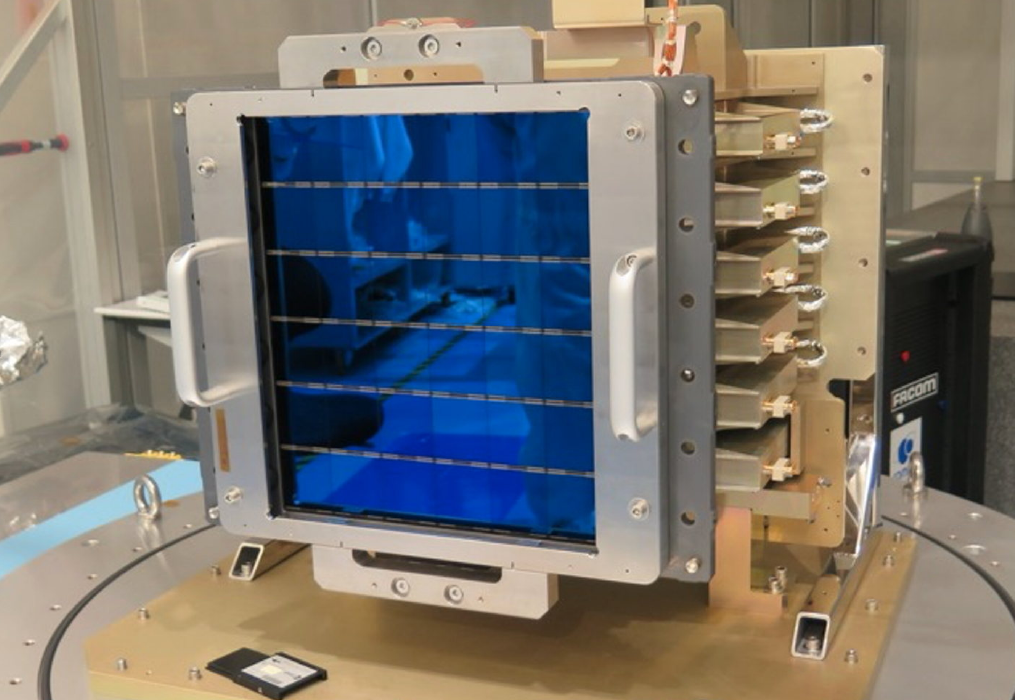
VIS focal plane of 36 CCDs, still with a protective frame for better handling, as well as after integration into the Euclid instrument bay. To the top and bottom of the VIS mosaic additional CCDs can be seen that are used by the spacecraft for stabilisation by tracking star positions during observations.
VIS is very simple: the detectors, a shutter to prevent light falling onto the detectors between observations, and a calibration lamp to determine light-sensitivity. VIS has no filters, no lenses in front: its single bandpass between 540 and 920nm is shaped by coatings on Euclid’s dichroic beamsplitter as well as a beam-folding mirror.
VIS’ simplicity is the foundation for an extremely precise calibration of shape measurement capabilities, required by Euclid’s weak-lensing cosmological probe, to trace structure formation across cosmic time.
NISP operates at near-infrared wavelengths, ranging from 920 to 2010nm. The papers 3+4 (Euclid. III. The NISP Instrument, Euclid Collaboration: Jahnke et al. and Euclid. IV. The NISP Calibration Unit, Euclid Collaboration: Hormuth et al.) describe the origin, construction, and components of NISP, as well as its internal and external calibration concept. NISP, like VIS, right now is functioning extremely well in space, as good as planned and hoped.
NISP has two channels, one for imaging, the other for slitless spectroscopy. This means a very different structure compared to VIS, integrating e.g. two filter wheels, its own collimating optics, and the detector system at the right-hand side.
NISPs two channels with a total of three imaging filter and four grisms mean that it needs changable optical elements, realised by two wheels. One is housing the filter and a light-tight closed position, while the other wheel houses the different grisms. The optical and mechanical tolerances were tight, to get the best image quality out of NISP and Euclid.
NISP wheels without their casing. The filter wheel on the left looks like it uses mirrors, which is actually true: these coatings let light pass through only in very specific near-infrared wavelengths, and reflect the light outside of that – also in this visible light picture.
The grism wheel on the right houses the four grisms that are mounted inside NISP.
NISPs detector system is using 16 so-called HAWAII2RG sensors with each 2048×2028 pixels, at lower spatial resolution than VIS. This is sufficient for NISPs photometric and spectroscopic goals.
A single NISP HAWAII2RG detector “triplet” including detector chip, read-out electronics, and flexible cable on the left. The right image shows the array of 16 detectors in a test setup where their spatial position is measured to ensure that they lie in the same plane.
NISPs calibration concept requires the capability in space to repeatedly map each pixel’s sensitivity to light. For this purpose a calibration lamp has been developed that can now be used to shine light from a set of five LEDs at different wavelengths onto the detector array. These LEDs had to be custom made – like most of the rest of NISP – to conform to the harsh operating conditions in space, and to provide defined doses of light throughout the mission duration.
These three papers are meant to function both as a handbook for astronomers, but also explain more deeply the design origin and some of the design decisions that were taken during development of VIS and NISP over more than a decade. So now when the Euclid Consortium is being asked a question about an instrument property, the first reply can now be: Have you read the papers?
Over the next years these articles will be supplemented with details, more up-to-date performance information since more knowledge accumulates now every day, and with deeper explanations both about calibration concepts, issues that are being found and how they are dealt with, and of course – most importantly – by releases of calibrated astronomical data and science results.
Articles:
Euclid. II. The VIS Instrument, Euclid Collaboration: M. Cropper + 426 further authors, submitted to Astronomy & Astrophysics, arXiv:2405.13492
Euclid. III. The NISP Instrument, Euclid Collaboration: K. Jahnke + 435 further authors, accepted for publication in Astronomy & Astrophysics, arXiv:2405.13493
Euclid. IV. The NISP Calibration Unit, Euclid Collaboration: F. Hormuth + 333 further authors, accepted for publication in Astronomy & Astrophysics, arXiv:2405.13494

